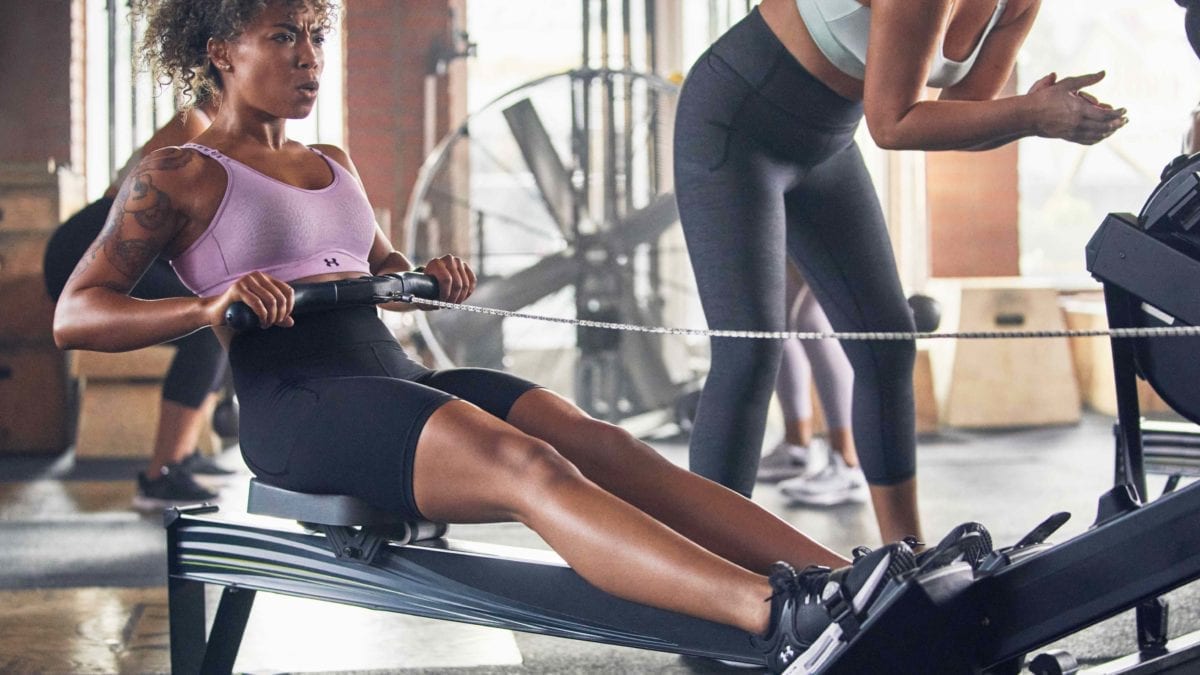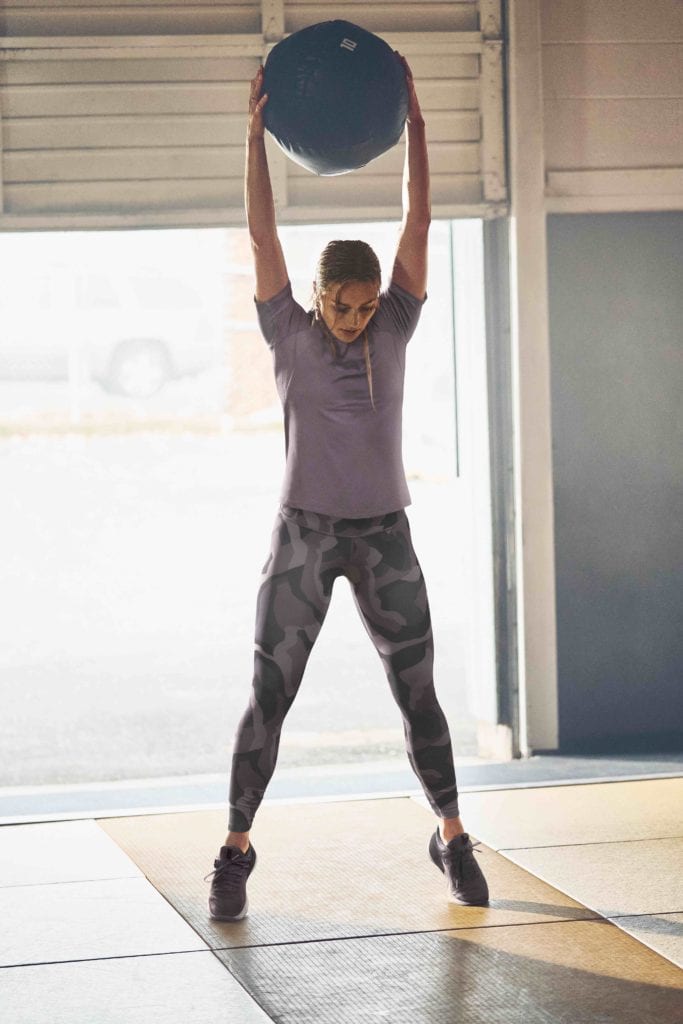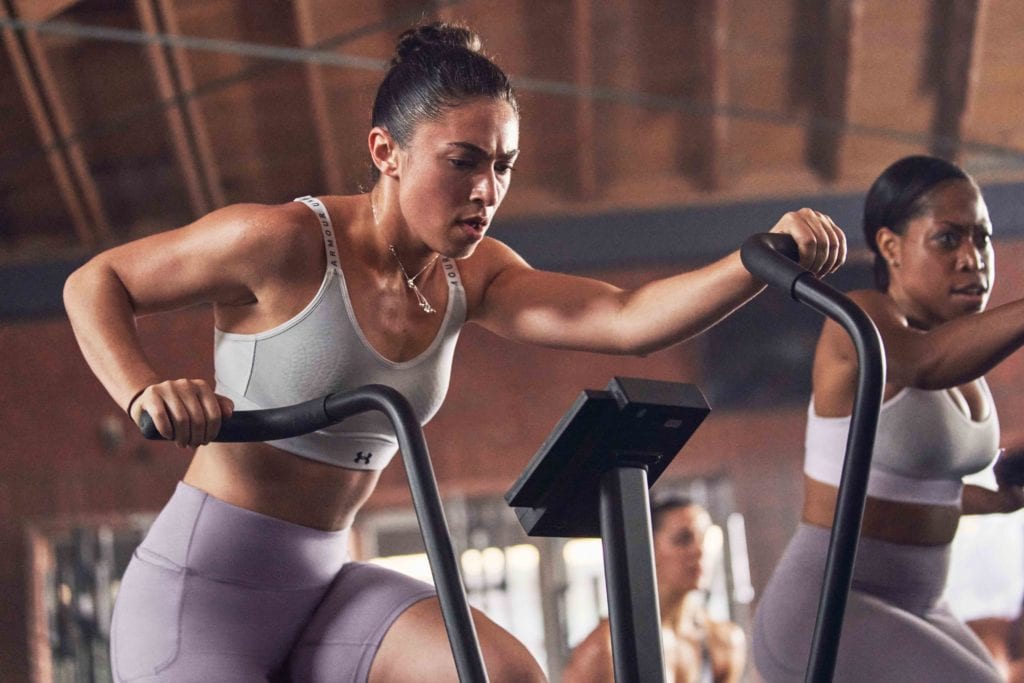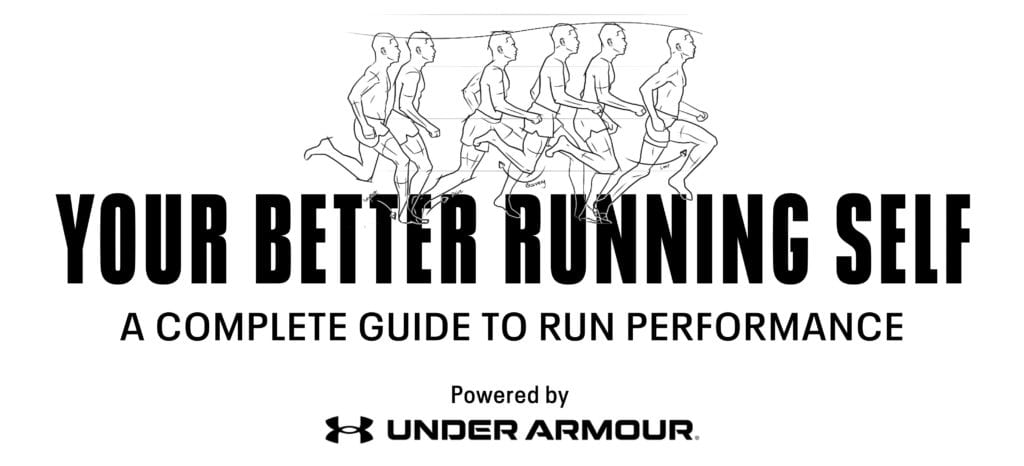Cross-training for runners
How to incorporate cross-training into your weekly running routine

Cross-training is essential to becoming a strong runner. In order to be the best athlete possible, taking time to become generally strong is paramount. Under Armour trainer Rich Hesketh is a former Canadian national decathlon champion and has spent 25+ years as a strength & conditioning specialist improving athletes performance in the areas of speed, strength, power and injury prevention. Rich believes the more holistic a training program, the better.
Well-rounded runners get injured less
Hesketh explains that runners who are well-rounded get injured less. “The biggest issue that you see consistently with runners is overuse and overuse injury,” he says. “Your heart and lungs don’t know the difference between running, biking and swimming. If you’re working at your 60 percent maximum heart rate, it’s all the same to your body. Your specific muscle groups need to be trained to sustain the impact of running, which is why you can’t cross-train all the time, but you can certainly supplement.”
What are overuse injuries?
Overuse injuries in runners occur when a runner has high weekly mileage, a rapid increase in the intensity of workouts and/or a lack of proper recovery techniques such as sleep, foam rolling, or stretching, and may result from improper preparation and build up for increased physical output. Unfortunately, they’re also some of the most tedious injuries to heal. Having a one-dimensional training regime can increase the likelihood of developing overuse injuries. Hesketh reminds athletes that there are multiple methods to improving your running performance that don’t involve running. “Most people think, if I’m not running, I’m not getting better. And unfortunately, most runners will experience shin splints, knee issues and ankle problems because of this.”
Effective ways to cross-train
Cross-training isn’t just using the elliptical or bike, it’s also strength training, which is one of the most effective ways to work on inefficiencies and prevent injury. Cross-training is all about paying attention to all aspects of your body, as opposed to just the ones you use while running. Aisha Praught-Leer is an Olympian, 1,500m runner and UA athlete who says that lifting heavy has hugely improved her training. “We lift for an hour three times a week. Lifting is a really important piece of our training.” Gym time is what helps keep elite distance runners healthy. While recreational runners don’t need to be lifting for three hours a week, a couple 30 minutes sessions is ideal.

Georgia Ellenwood is a UA athlete and Olympic hopeful in the heptathlon. She does seven events, so she’s almost always cross-training in a sense. Her event is all about being a well-rounded athlete. “I do a lot of technical training for specific events but there’s also a ton of time in the weight room working on both power and fine movements.” Because Ellenwood’s event necessitates training for so many different sports, overuse injuries are less likely to occur.

If runners are looking to cross-train, their best bet is the elliptical, bike, pool or strength training. The best possible method incorporates all of the above. Toronto based Under Armour trainer Kevin Yeboah, incorporates cross-training into his clients’ training regimes to help reduce the likelihood of overuse injuries and to effectively improve their performance. Kevin’s go-to equipment that he recommends is the bike because it reduces the load on a runner’s body while incorporating strength work. “Part of it is based on what you have access to, and most people have access to a bike. It’s a similar style of exercise as running. They complement each other well. You can also increase tension on the bike, which kind of doubles as strength training as well.”
In addition, Montreal-based Under Armour trainer Jennifer Rochon prefers the elliptical because it’s beneficial for runner’s alignment. “Many running injuries are due to structural issues which over time have taken a toll on your joints. If you have an injury, the elliptical allows you to maintain endurance without the load. It’s also a similar movement to running, so you can maintain your posture and proper alignment.”
Many elite runners incorporate cross-training into their weekly routines, so it’s part of their yearly plan as opposed to a reaction to injury. Ashley Taylor is a Canadian 800m runner and UA athlete who says she cross-trains on the bike at least twice a week in place of a recovery run. Those rides have kept her fit and healthy throughout social isolation, when she didn’t have access to manual therapy. Taylor says she also uses bike rides as a way to shake out her legs after a hard session. “With my team we don’t do many double runs, but in the evening I’ll either go for a walk or a short ride to relax and mobilize a bit.”
If runners are looking for an ideal strength routine that they can do at home, check out Rochon’s and Yeboah’s exercise program here.
RELATED: Strength training for runners: home workout | gym workout
Ideal cross-training gear
If you’re looking to be time-efficient, coupling an aerobic cross-training workout with lifting weights is a good way to do it, and you can wear the same clothing for both. The ideal gear for any type of cross-training workout should consist of shoes and apparel that equip athletes to perform in the moment and conquer the unexpected. Under Armour has you covered. The UA HOVR™ Phantom 2 is the ultimate versatile shoe, its high energy feel provides a responsive, plush UA HOVR Foam and Energy Web that helps give back the force you put into every step. Also the UA RUSH™ collection, made with UA RUSH™ mineral-infused fabric, gives you more energy, strength, and endurance.



